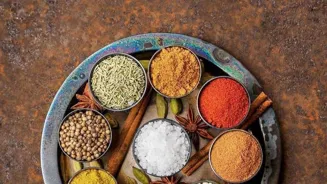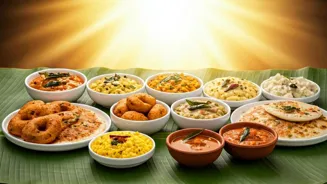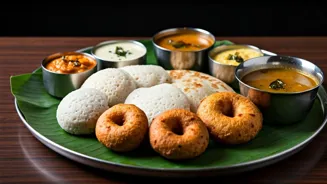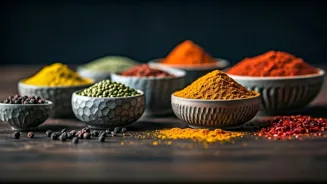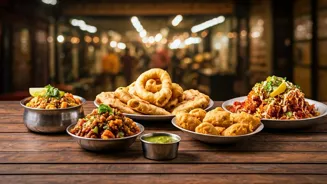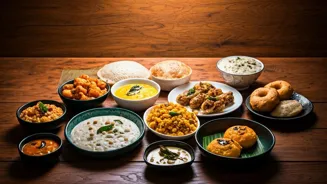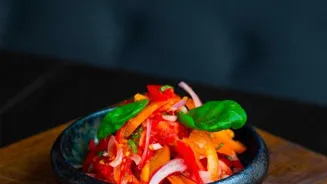Dive into India's rich culinary tapestry shaped by regional ingredients. Explore how flavors tell stories of heritage and tradition
India, a land of vibrant cultures and traditions, boasts a culinary landscape
as diverse as its people. From the snow-capped Himalayas to the sun-kissed beaches of the south, each region has its own unique style of cooking, heavily influenced by the locally available ingredients.
This dependence on indigenous produce has resulted in a fascinating tapestry of flavors, textures, and aromas that define Indian cuisine.
Think of it as a delicious geography lesson, where every dish tells a story of its origin, the climate that nurtured its ingredients, and the cultural practices that shaped its preparation.
Punjab's hearty dishes vs. Kerala's fragrant seafood; geography shapes cuisine
The fertile plains of Punjab, blessed with abundant wheat and dairy, give us hearty dishes like Sarson ka Saag and Makki di Roti. The use of ghee is generous, a testament to the region's dairy production. The cuisine is robust and filling, reflecting the agricultural lifestyle of its people.
On the other hand, the coastal regions of Kerala and Goa, with their access to coconuts, rice, and spices, offer dishes that are lighter, fragrant, and often feature seafood. Coconut milk is a staple, lending a creamy sweetness to curries and stews.
Spices like cardamom, cloves, and cinnamon are used liberally, creating complex flavor profiles. The contrasting styles highlight how geography dictates the availability of ingredients, which then become the building blocks of regional culinary traditions.
Contrasting North and South Indian cuisines reflect regional influences
The North and South of India present a particularly striking contrast in cooking styles. Northern cuisine, influenced by Mughlai and Persian traditions, often features rich gravies, tandoor-cooked dishes, and the use of dried fruits and nuts.
Saffron, a prized ingredient, is frequently used to add color and flavor to dishes like Biryani. In contrast, Southern cuisine relies heavily on rice, lentils, and vegetables. Dishes are often steamed or simmered, and coconut oil is a common cooking medium.
The use of tamarind is also prevalent, adding a tangy flavor to many curries. This difference is not just about taste; it reflects the distinct agricultural practices and historical influences of the two regions.
Eastern and western India offer diverse culinary experiences with unique flavors and ingredients
The eastern and western regions of India also offer unique culinary experiences. West Bengal, with its abundance of freshwater fish and rice, is known for its delicate flavors and subtle use of spices. Mustard oil is the preferred cooking medium, lending a distinct aroma to dishes.
Sweets are an integral part of Bengali cuisine, with milk-based desserts being particularly popular. The cuisine of Gujarat, known for its vegetarian fare, is characterized by its sweet, sour, and spicy flavors.
The use of lentils and vegetables is extensive, and dishes are often prepared with a touch of sweetness. The Western region is also known for its use of dry spices and groundnut oil.
Regional spices define Indian cuisine, elevating it to art
While regional ingredients play a crucial role in shaping Indian cuisine, spices are undoubtedly the soul of Indian cooking. Each region has its own unique blend of spices, carefully selected and combined to create distinctive flavor profiles.
In Kerala, for instance, the use of Malabar black pepper is ubiquitous, adding a pungent heat to dishes. In Kashmir, saffron and dry ginger are commonly used, imparting warmth and aroma. The art of spice blending is a closely guarded secret, passed down through generations.
It is this mastery of spices that elevates Indian cuisine from simple cooking to a culinary art form.
Regional ingredients, culture, history shape Indian cuisine diversely
The influence of regional ingredients on Indian cooking extends beyond geography. Cultural practices, religious beliefs, and historical events have also played a significant role in shaping culinary traditions.
For instance, the Jain community's strict adherence to vegetarianism has led to the development of innovative and flavorful vegetarian dishes. The arrival of the Portuguese in Goa introduced new ingredients like potatoes and tomatoes, which have since become staples in Indian cooking.
The British influence in Bengal led to the development of Anglo-Indian cuisine, a fusion of Indian and European flavors. These cultural exchanges have enriched the culinary landscape of India, creating a diverse and dynamic food culture.
AI Generated Content. Glance/InMobi shall have no liability for the content